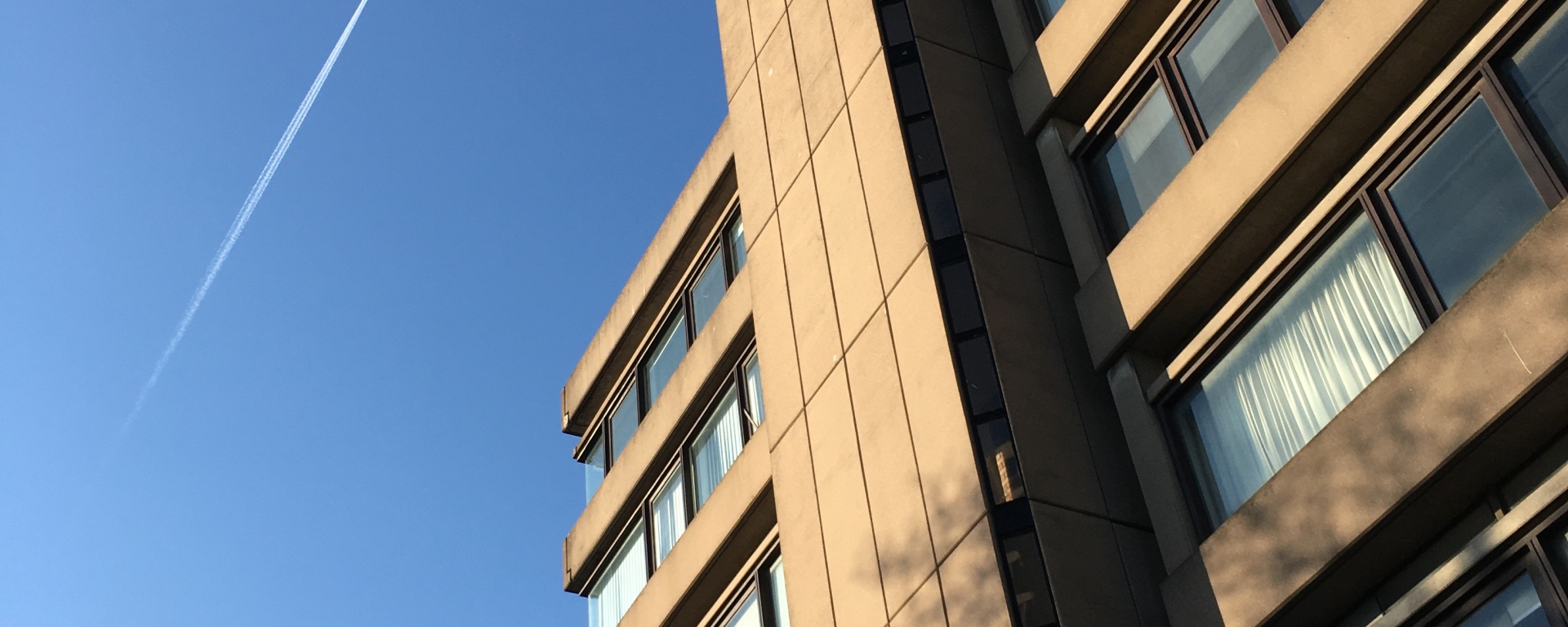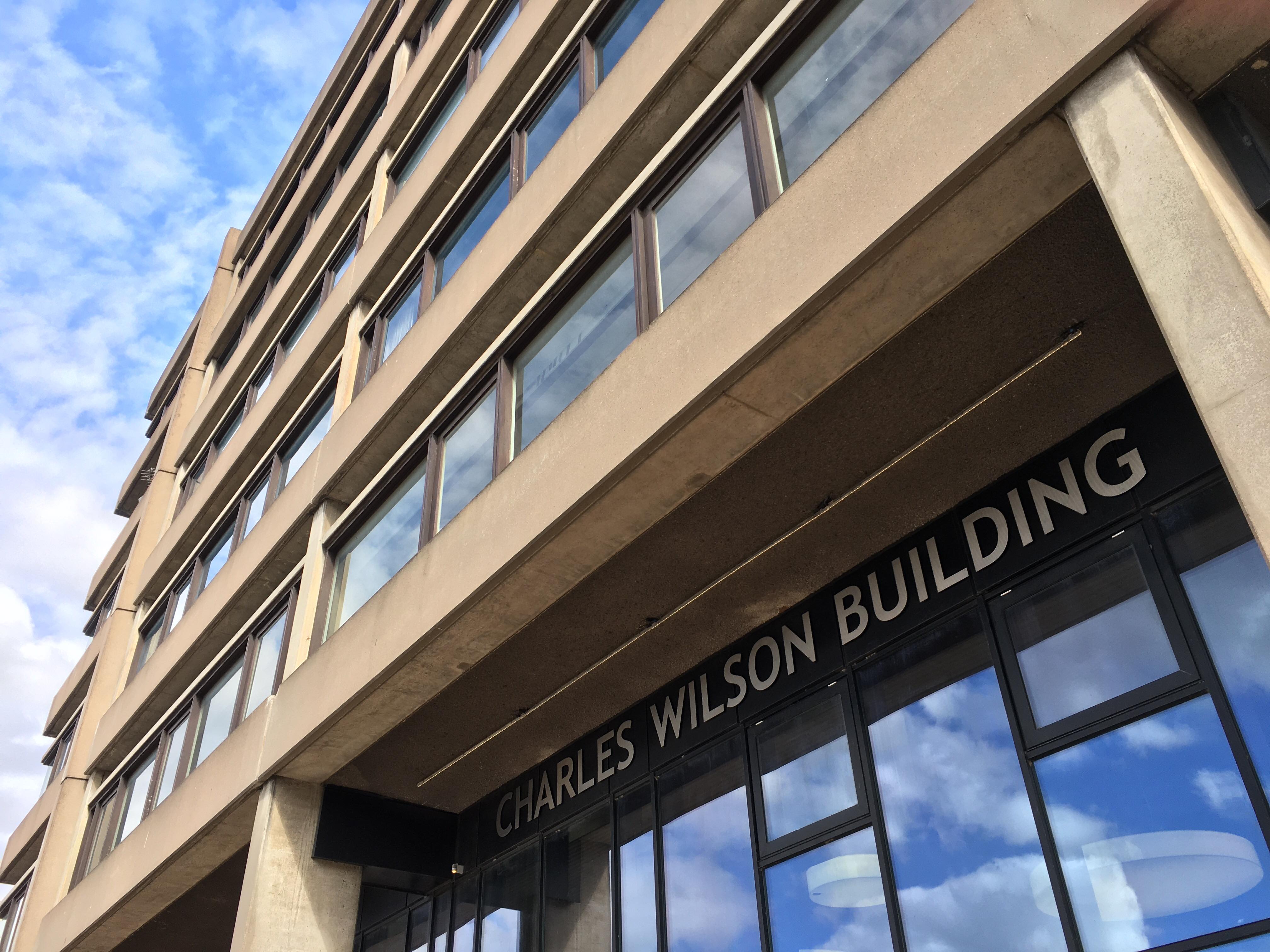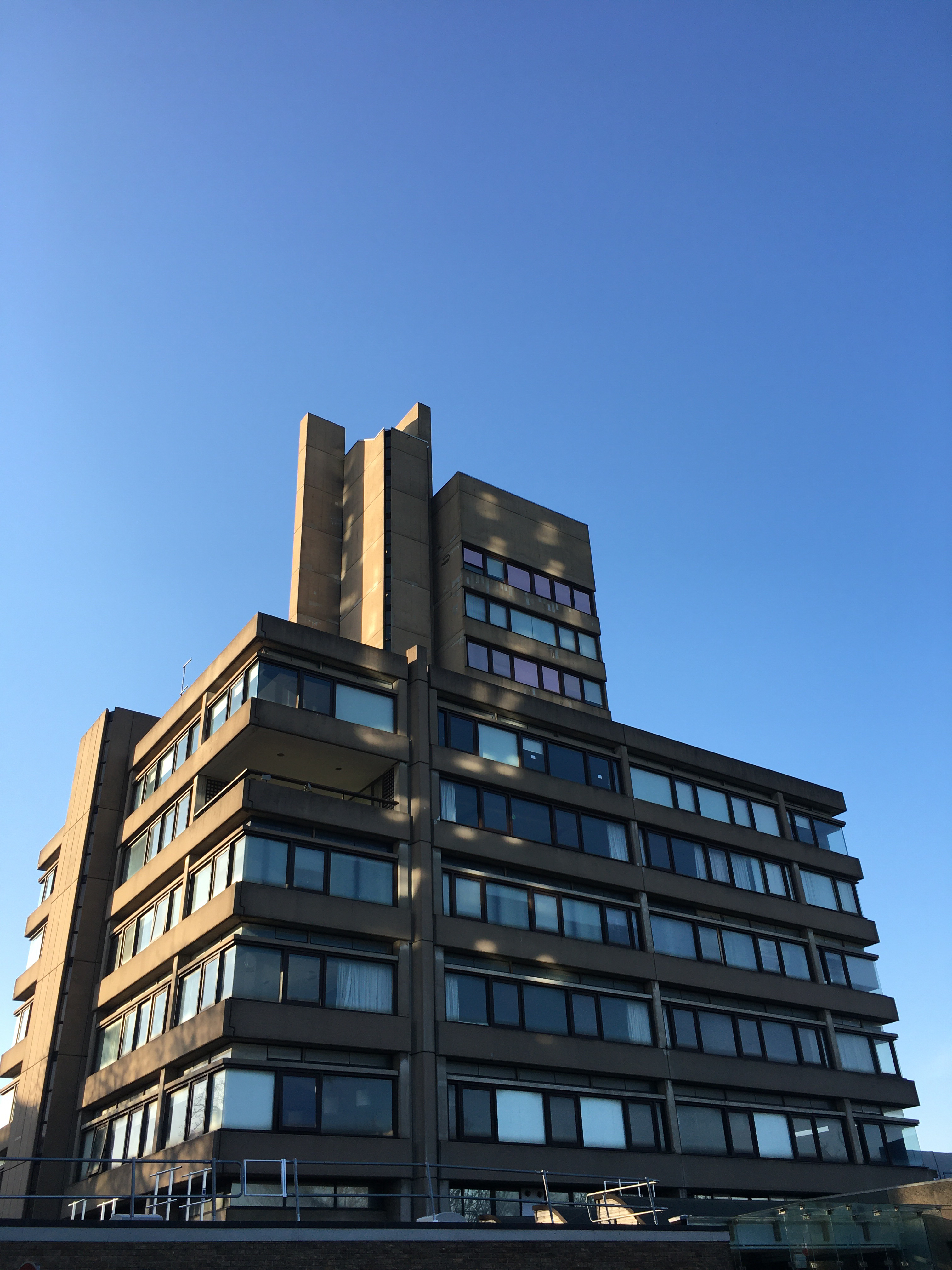Exploring your own home cities architecture be that in a small town or a metropolitan city always unearths some surprises and treasures. During this lockdown period, I’ve been so grateful to have Victoria Park in Leicester on my doorstep to do my daily walk with a bonus archi-tour of three examples of the UKs best architects of the 20th century in and around the park.
More of those other treats to come on the blog, but today is all about the much LOATHED and vilified and now LOVED and hip Brutalism!
Brutalism originates from the use, by the pioneer modern architect and painter Le Corbusier, of ‘beton brut’ – meaning raw concrete in French. It’s an architectural style of the 1950s and 1960s characterised by simple, block-like forms and raw concrete construction.
In the UK Brutalism is often associated with much maligned public housing estates, which were often beset with social issues, poor maintenance and utopian dreams easily forgotten by the councils who created them. But in recent years Brutalism is now hip and many are searching out examples of this style and defending their sometimes rash, destruction.
One such Brutalist example is on the edge of Victoria Park and in the centre of the University of Leicester campus. The Charles Wilson Building (1962-67) was designed by Denys Lasdun – one of the most famous English and Brutalist architects of the 20th century.
Sir Denys Lasdun CH (8 September 1914–11 January 2001) arguably most famous work is the National Theatre, on London’s South Bank, a Grade II listed building and one of the most notable examples of Brutalist design in the United Kingdom. The National Theatre’s brutalist neighbour, IBM, is also currently subject to a Twentieth Century Society campaign, objecting to the ‘heavy handed’ plans to redevelop Lasdun’s IBM building on London’s South Bank.
Lasdun studied at the Architectural Association School of Architecture in London and was a junior in the practice of Wells Coates. Like other Modernist architects, including Sir Basil Spence (Coventry Cathedral) and Peter and Alison Smithson, Lasdun was much influenced by Le Corbusier and (less is more) Ludwig Mies van der Rohe, but there was a gentler, classical influence, too, from the likes of Nicholas Hawksmoor.
Charles Wilson is located on a site provisionally allocated to the Council and Senate building in Leslie Martin’s University of Leiester’s campus masterplan. Martin, the architect of The Royal Festival Hall, part of 1951’s Festival of Britain, is one more part of the relationship between Leicester’s campus and the London’s brutalist and modernism hotspot, The South Bank.
Lasdun’s Charles Wilson building lies at the heart of the universities campus and acts as a visual anchor to the site to those walking up from University Road.
The building has a distinct Lasdun horizontal style with six floors. When the Robbins report of the 1960s was approved by the Government to increase university access, the university needed an increased capacity and Lasdun added the top five blocks to the design and many a student comparing it to Transformers Optimus Prime!
This extra height and blocks of the additional floors gives the ‘blocks on blocks’ characteristic of many of Lasdun’s designs and in his acclaimed University of East Anglia buildings.

Charles Wilson now arguably sits comfortably within the changing Leicester campus architecture and development of this modern university. The buildings higher floors, particularly due to its elevated position, offer spectacular views across to the city centre on one side, and open balcony views to Victoria Park and the Clarendon Park and Highfields neighbourhoods of the city. (Will add photos of this and internal spaces when the University re-opens.)
From the park aspect and from the cities motorways when approaching Leicester, Charles Wilson is a distinct character in the three illustrious towers of the James Stirling & James Gowan’s Engineering building and Arup’s Attenborough tower – coming next up on the blog!
Reference credit: The Architecture of the Universities of Leicester, Arthur Lyons Third Edition.








